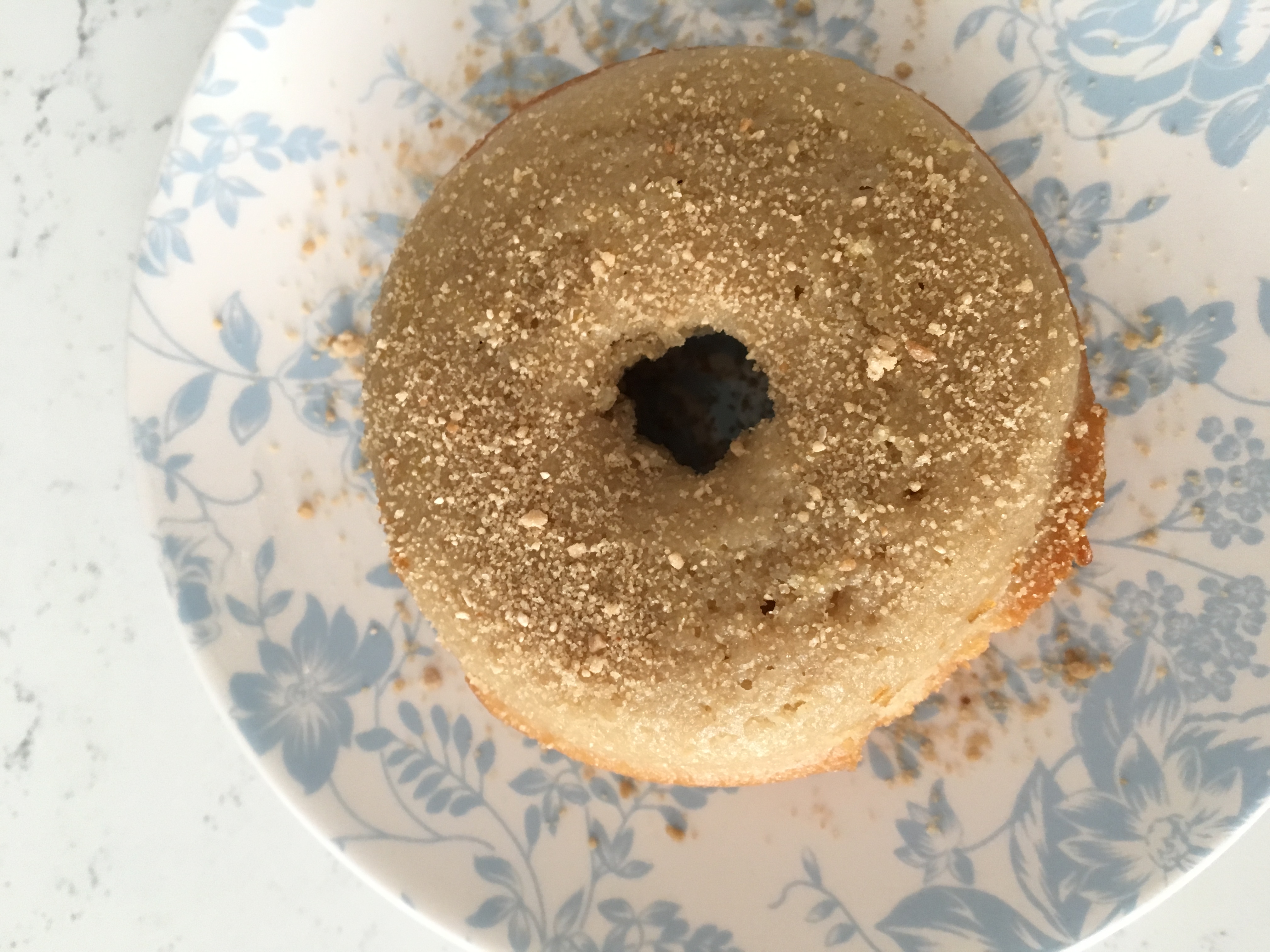Sure, pumpkin anything is bringing sexy back this fall (and all the falls) but apples have been an autumnal all-star far longer. We could do a comparison table here showcasing everything you can do with apples versus pumpkin and I bet these two tasty ingredients would be neck-and-neck, but that is too much formatting and work for me to handle before my next yoga class (truth be told). So instead, I’m going to tell you about how I turned this delicious Pumpkin Cake Donut recipe from King Arthur Flour into a Maple-Apple Cake Donut using apples I picked from my local Waters Orchard.
Growing up in Massachusetts, my favorite donuts were those powdered cake donuts from Dunkin’ Donuts which inevitably left more sugary dust on your chin and clothes than made it into your mouth. I loved the fluffy texture and sweet remnants you got to lick off your lips after the treat was done. As a nutrition coach, I tend not to eat or recommend too many donuts these days but if you’re going to do it, do it good.
The following Maple-Apple Cake Donut recipe was inspired by sweet apples and a small jar of granulated maple sugar from my parents up in New England. The ingredients did the talking, King Arthur helped me with the baseline, and my creative mind made swaps to cut back on added sugar and fuse these fluffy Os with fall flavor.

MAPLE-APPLE CAKE DONUTS
Makes 12 donuts
Ingredients:
- 1/4 cup coconut oil, melted
- 1/2 stick of butter (or 1/4 cup), melted
- 3 large eggs
- 1/2 cup cane sugar
- 1/4 cup light brown sugar
- 2 Tbs maple syrup
- 1 1/2 cups 15-minutes homemade apple sauce (recipe follows)
- 1 tsp ground cinnamon
- 1/4 ts ground nutmeg
- 1/8 tsp ground cloves
- 1 1/2 tsp fine sea salt
- 1 1/2 tsp baking powder
- 2 cups all-purpose flour, level
- Granulated maple sugar for dusting
Directions:
- Preheat the oven to 350°F. Lightly grease two donut pans.
- In a large mixer, use the flat beater attachment to combine the oil, butter, eggs, sugars, maple syrup, apple sauce, spices, salt, and baking powder until smooth. (You can also do this by hand with a little elbow grease and a whisk).
- Add the flour, stirring just until smooth.
- Fill the wells of the donut pans about to the top but be careful they don’t overflow.
- Bake for ~18 minutes, or until a toothpick inserted into the center of one comes out clean.
- Remove from the oven, let cool a few minutes, loosen the edges (if need be) with a butter knife, and gently flip onto a rack to cool.
- While the doughnuts are still warm generously dust them with granulated maple sugar (or cinnamon sugar).
- Let cool completely and store at room temperature for several days. I like to place them on a plate, stick them with toothpicks, and tent them with plastic wrap so they have room to breath.
HOMEMADE APPLE SAUCE
Ingredients:
- 2 extra large or 3 large apples – peeled, cored and chopped
- 1 tsp brown sugar
- 1/2 tsp ground cinnamon
Directions:
- In a medium microwavable mixing bowl, combine prepped apples with sugar and cinnamon.
- Microwave for 3 minutes, stir, and microwave again another 3-4 minutes until apples are soft (not mushy) when pricked with a fork.
- Transfer to a blender or food processor and blender until mostly smooth (any little chunks will taste delicious when you bite into them).


















